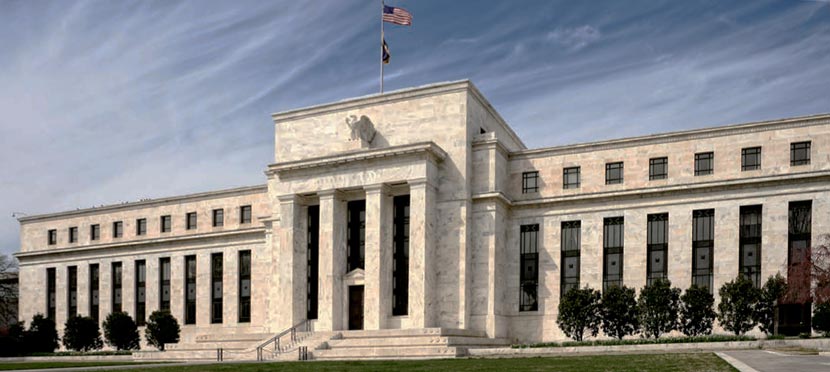The US Federal Reserve’s (the Fed) decision to hike interest rates by 25bps represents the beginning of a new phase of US monetary policy normalization, says Fitch Ratings.

The prediction for three hikes in 2017 in the Federal Open Market Committee’s (FOMC) December 2016 Summary of Economic Projections was initially met with some skepticism in financial markets. However, by moving rates up again so quickly, the Fed now looks well on track to deliver. Two rate hikes within the space of just over three months and some marginal toughening up of the statement on forward guidance underscore the contrast with the glacial and hesitant approach to unwinding stimulus seen in the past few years. More broadly, Fitch believes that the recent US rate hikes could mark the beginning of a significant shift in the global interest rate environment, with benchmark US policy rates settling higher over the long term than current market expectations.
The decision to raise the Fed Funds target rate to 0.75%-1.00% marks the second rate hike in just over three months. This represents a major acceleration in Fed action. Fitch now expects a total of seven hikes in 2017 and 2018, bringing the policy rate to 2.50%. This contrasts with just two rate hikes in total between the end of 2008 and 2016.
Macro indicators through 2H16 and early 2017 reinforce the likelihood of a pickup in rate normalization over the medium term. GDP growth of 2.6% (annualized) in 2H16 was a significant recovery from 1H16, underpinned by improvements in private investment and industrial output. So far, jobs data this year have also been supportive, with the latest nonfarm payrolls, unemployment and private sector earnings figures all pointing to tightening labor market conditions.
Material fiscal easing should bolster positive domestic demand trends. President Trump’s agenda of tax cuts, fiscal stimulus and deregulation in the financial services and other sectors strongly indicates that some level of growth boost is likely. Although the precise form of stimulus remains uncertain, Fitch believes that fiscal policy could add up to 0.3pp to economic growth in both 2017 and 2018. Fitch recently revised up its US growth expectations in recognition of the increased likelihood of fiscal easing, higher private investment and improving global outlook. Fitch forecasts US GDP growth to accelerate to 2.3% and 2.6% in 2017 and 2018, respectively.
Fitch does not believe that the increased pace of Fed rate hikes poses a risk to US economic growth. However, the impact from dollar strengthening could have wider global effects, especially should this result in prolonged monetary policy divergence. US rate rises, combined with fiscal stimulus, at a time when the European Central Bank and Bank of Japan are continuing to pursue ultra-loose monetary policy, should prolong the dollar strengthening trend. Rising rates and dollar strength have historically added to external financing risks for emerging markets.
Fitch believes that market expectations for a permanently lower equilibrium interest rate in the US and the continuation of ultra-loose monetary policy for several more years could be increasingly challenged. This could result in a rapid shift in consensus expectations toward a higher terminal rate and a faster pace of normalization. Notably, market consensus was not expecting a March rate hike as early as last month, although healthy macro data releases and hawkish public statements from FOMC members resulted in a quick shift in expectations ahead of the actual decision.
Rising interest rates in 2017 and 2018 will not be a broad concern for US corporates in aggregate, but pockets of risk could challenge entities at the lower end of the rating spectrum, according to Fitch Ratings.
With current LIBOR levels at or above most pricing floors – USD 3M LIBOR was 1.11% as of March 8 – subsequent rate hikes would expose leveraged loan issuers to reset risk that could pressure credit profiles and cash flow generation. This risk is most acute for deeply speculative-grade credits with large amounts of floating rate debt, already large interest burdens, and limited to negative FCF.
Near-term interest rate risk is most evident for leveraged issuers who took advantage of longstanding favorable market conditions to issue large amounts of floating-rate debt, but whose credit profiles deteriorated due to secular challenges or idiosyncratic issues that resulted in higher leverage, depressed cash flows and limited liquidity.
Retail companies, for example, with high floating-rate debt exposure could be particularly exposed to interest rate risk if secular challenges offset the benefits of an accelerating economy on top-line growth.
From a credit profile perspective, we are less concerned about exposure to fixed-rate high-yield (HY) bonds. Historically, HY spreads do not increase meaningfully until after the Fed has concluded its tightening cycle. As a result, modest policy rate increases may not be accompanied by corresponding increases in spreads.
Interest rates typically rise in response to higher inflation, usually during economic recoveries, implying generally improving credit profiles. Fitch’s Stable Outlook for US Corporates in 2017 supports this view.
Moreover, companies have been proactive in managing maturity profiles. US corporates have aggressively refinanced during nearly a decade of low interest rates, pushing out maturities with long-dated, low-coupon debt to maintain historically strong interest coverage metrics and solid liquidity profiles. We expect fundamentals to remain stable as expectations of growth in cash flow are fueled by persistent cost controls, efficiencies, and revenue growth, albeit weak.
The Trump administration’s tax proposal to cut the corporate tax rate to 15% and eliminate the tax-deductibility of interest expenses adds another layer of risk. Negative cash flow impact from the removal of interest expense deductibility may outweigh the positive cash flow impact from the corporate tax cut for issuers with high debt burdens and debt costs
